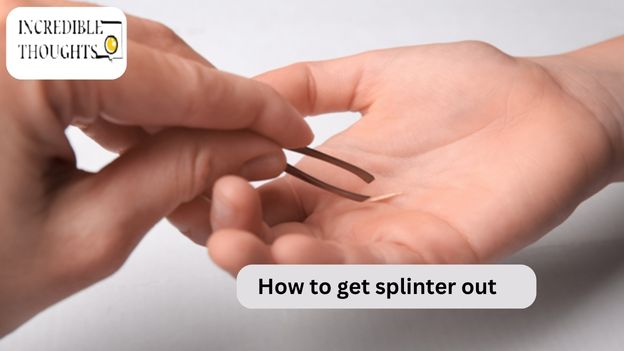Introduction:
Dealing with a splinter can be a pesky and painful experience. However, fear not – mastering the art of splinter removal can turn this seemingly daunting task into a quick and painless process. how to get splinter out? In this comprehensive guide, we'll explore step-by-step methods to safely extract splinters, ensuring a hassle-free experience for you.
Understanding Splinters:
Before diving into the removal process, it's essential to understand what a splinter is. A splinter is a foreign object, typically a small piece of wood or glass, that embeds itself into the skin. While often harmless, ignoring a splinter can lead to infection and discomfort. Knowing how to remove it properly is crucial for preventing complications.
Step-by-Step Guide to Safe Splinter Removal:
Gather Your Tools:
Begin by assembling the necessary tools, such as tweezers, sterilized needles, and antiseptic wipes. Ensure a well-lit environment to facilitate a clear view of the splinter.
Clean the Area:
Before attempting to remove the splinter, clean the affected area with soap and water. This reduces the risk of infection and ensures a sterile environment for the extraction process.
Use Tweezers:
If the splinter is protruding, tweezers are often the best tool for the job. Grasp the splinter as close to the skin's surface as possible and pull it out gently and steadily in the same direction it entered.
Sterilize a Needle:
For embedded or stubborn splinters, sterilize a needle using a flame or rubbing alcohol. Carefully lift the splinter's tip, allowing for easier removal with tweezers or your fingers.
Consider Glue:
If the splinter is small and not deeply embedded, applying glue can be an effective method. Allow the glue to dry, then peel it off, bringing the splinter with it.
Apply an Antiseptic:
After successfully removing the splinter, clean the area with an antiseptic wipe to prevent infection. Consider applying an over-the-counter antibiotic ointment and covering the wound with a bandage.
Monitor for Infection:
Keep a close eye on the area for any signs of infection, such as redness, swelling, or pus. If these symptoms occur, seek medical attention promptly.
Conclusion:
Mastering the art of safely and painlessly removing splinters is a valuable skill that can save you from unnecessary discomfort and complications. By following these step-by-step guidelines and exercising caution, you can confidently tackle splinter removal, turning it into a routine task rather than a source of stress.





Comments